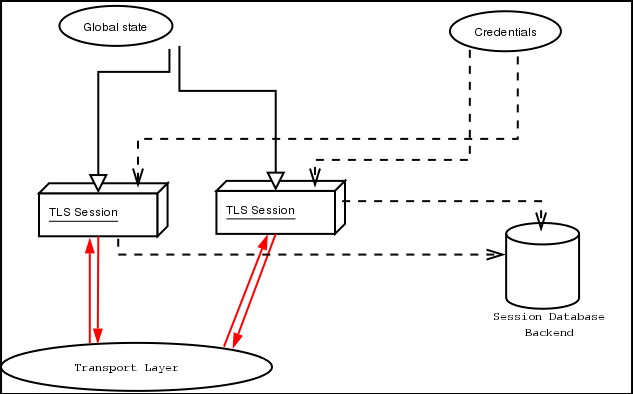
Next: Error handling, Up: The Library
A brief description of how GnuTLS works internally is shown at the figure below. This section may be easier to understand after having seen the examples (see examples).

As shown in the figure, there is a read-only global state that is initialized once by the global initialization function. This global structure, among others, contains the memory allocation functions used, and some structures needed for the ASN.1 parser. This structure is never modified by any GnuTLS function, except for the deinitialization function which frees all memory allocated in the global structure and is called after the program has permanently finished using GnuTLS.
The credentials structure is used by some authentication methods, such as certificate authentication (see Certificate Authentication). A credentials structure may contain certificates, private keys, temporary parameters for diffie hellman or RSA key exchange, and other stuff that may be shared between several TLS sessions.
This structure should be initialized using the appropriate initialization functions. For example an application which uses certificate authentication would probably initialize the credentials, using the appropriate functions, and put its trusted certificates in this structure. The next step is to associate the credentials structure with each TLS session.
A GnuTLS session contains all the required stuff for a session to handle one secure connection. This session calls directly to the transport layer functions, in order to communicate with the peer. Every session has a unique session ID shared with the peer.
Since TLS sessions can be resumed, servers would probably need a database backend to hold the session's parameters. Every GnuTLS session after a successful handshake calls the appropriate backend function (See resume, for information on initialization) to store the newly negotiated session. The session database is examined by the server just after having received the client hello1, and if the session ID sent by the client, matches a stored session, the stored session will be retrieved, and the new session will be a resumed one, and will share the same session ID with the previous one.